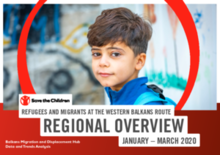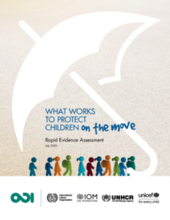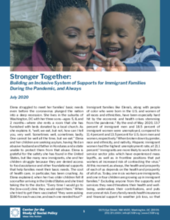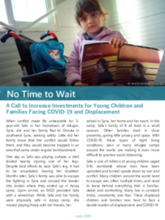Displaying 171 - 180 of 809
This report describes key trends in migrations in the region, detailing information about the number of people on the move, demography (age, sex, country of origin, etc), behavioral patterns, and routes in use - with a focus on children, particularly unaccompanied children.
This study explores how male unaccompanied migrant children’s interactions with child protection staff in Greece shape their future trajectories as migrants.
This rapid evidence assessment (REA) aimed to answer three questions: (1) What interventions have been effective in ensuring the protection of children on the move? (2) What are the implementation factors that make these interventions effective or that hamper effectiveness (for example the context of the intervention, and specific design features such as who is targeted)? and (3) What kinds of social welfare and child protection systems are linked to effective interventions?
This study examines how childhood experiences of being left behind by migrant parents affect the behaviors of adults.
This brief explores how policymakers can begin to build a comprehensive and inclusive system of supports to protect immigrant families.
To explore the complex dynamics of parental migration on nonsuicidal self‐injury (NSSI), this study examined the roles of parent–child cohesion and socioeconomic status (SES) in the relationship between stressful life events and NSSI.
This Call to Action outlines some of the impacts of both displacement and COVID-19 that are threatening the positive development of many young children around the world. It calls for governments and donors honor existing commitments, ensure inclusion of young children and families in public systems and take FIVE immediate actions.
This article explores the significant emotional and physical health needs of unaccompanied asylum-seeking children in the European Union, recommending a stepwise approach to delivery of services so as not to overwhelm them.
In this paper, after a historical introduction, the authors will refer, from a general point of view, to the current moment of immigration witnessed in Spain offering not only statistical data regarding this phenomenon but also legislation, and description of the policies carried out by the central and regional governments on issues like immigration, asylum and integration, with a particular focus on unaccompanied minors.
The purpose of this study was to examine the mental health status and substance use behaviors of urban left-behind children and urban children still living with their parents in comparison to rural left-behind children.




